SERBIA
Belgrade

Belgrade
General
Belgrade, the attractive Serbian capital, is renowned for its fusion of Eastern and Western cultural characteristics. This refreshing combination can be found in the architecture, the cuisine and the entire atmosphere that the city breathes.
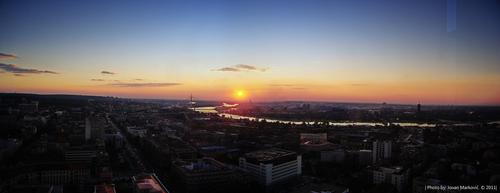 Belgrade Panorama SunrisePhoto: Jovan Markovic (CC BY 2.0) no changes made
Belgrade Panorama SunrisePhoto: Jovan Markovic (CC BY 2.0) no changes made
Location
In the north of Serbia, the capital Belgrade is located at the confluence of the Danube and Sava rivers. The city is located on the Pannonian plain. Serbia is located in Southeastern Europe and is surrounded by Romania, Croatia, Montenegro, Hungary, Macedonia, Bulgaria, Albania and Bosnia-Herzegovina. The city has an area of 3,223 km² and is home to around 1.7 million people.
Weather
Belgrade has a continental climate, which means that the winters are cold, but the summers are all the warmer. The average temperature in the summer months is around 22 degrees and in winter around 3 degrees. Most precipitation falls in May, June and July.
History
The history of Belgrade goes back to the 4th century BC. The area was then inhabited by Celtic tribes. Later the city grew into a Roman city with the name Singidunum. There are still remains from Roman times to be found in Belgrade such as the Kalemegdan Fortress. Until it was taken by the Ottomans in the Middle Ages, Belgrade was the center of Serbia. In 1878, Serbia regained its independence and Belgrade became the country's capital.
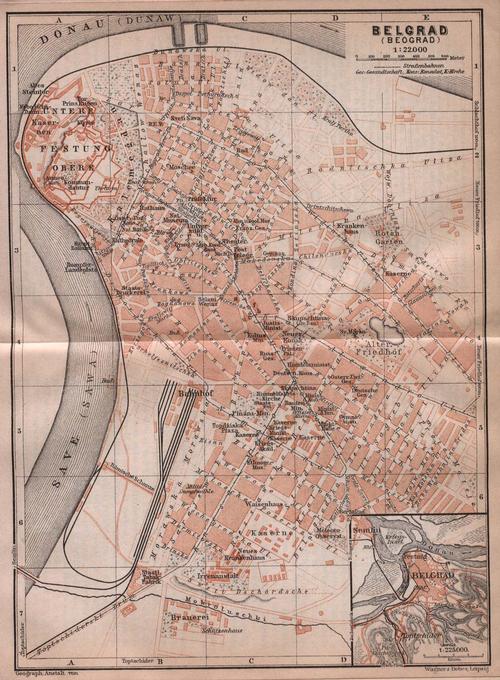 Belgrade Map from 1905Photo: Public Domain
Belgrade Map from 1905Photo: Public Domain
After the First World War, Belgrade became home to not only Serbs, but also Croats and Slovenes. The Kingdom of Yugoslavia, with Belgrade as its capital, was born. From 1941 to 1945, Belgrade was occupied by the Nazis and the city was severely damaged during a bombing raid by the Luftwaffe.
After the departure of the Germans, Belgrade again became the capital of the now communist Republic of Yugoslavia. In 1991 Yugoslavia fell apart and Belgrade became the capital of Serbia-Montenegro. In 1999, during the Kosovo war, NATO bombed Belgrade several times. In 2006, this country also split up again, leaving Serbia alone, with Belgrade as its capital.
Sights
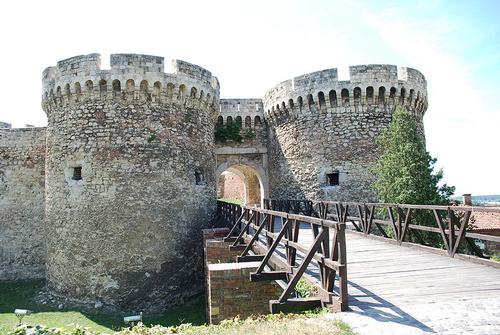 Kalemegdan Fort BelgradoPhoto: George Groutas (CC BY 2.0) no changes made
Kalemegdan Fort BelgradoPhoto: George Groutas (CC BY 2.0) no changes made
The name of the Kalemegdan Fort is derived from the Turkish name for 'Fortress of the Battlefield'. It is believed that the first version of the fortress was built by the Celtic tribes who lived in Belgrade, but the Romans also contributed to the fortress. The fortress was owned by many rulers, but now it has been owned by the Serbs since 1867. The fortress has often been destroyed and rebuilt; the last time this happened was in World War II. A beautiful park surrounds the impressive fortress.
The Military Museum is currently located in the fort. In the warm summer months, this place is a base for both residents and tourists.
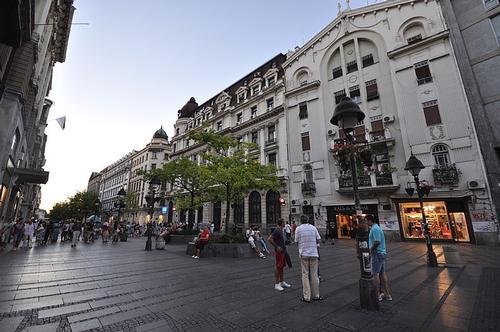 Knez Mihailova BelgradePhoto: Jorge Lascar CC 2.0 Generic no changes made
Knez Mihailova BelgradePhoto: Jorge Lascar CC 2.0 Generic no changes made
The old historic center of Belgrade is located next to the Kalemegdan Park.
The heart of the center is Knez Mihailova street. On the main square of the city, the Trg Republike, you can see the statue of the Prince Michael Obreovic III and also the National Theater. During the day you can shop here and in the evening the old center turns into a nightlife area.
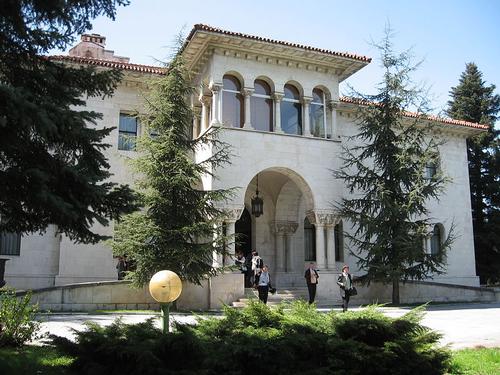 Beli Dvor BelgradePhoto: Lumen roma CC 3.0 Unported no changes made
Beli Dvor BelgradePhoto: Lumen roma CC 3.0 Unported no changes made
The Beli Dvor, the White Palace, is a beautiful building owned by Crown Prince Aleksander. It is located in the exclusive district of Dedinje. The prince has no political power, as Serbia is a republic. The White Palace was once the residence of Tito, the last president of Yugoslavia.
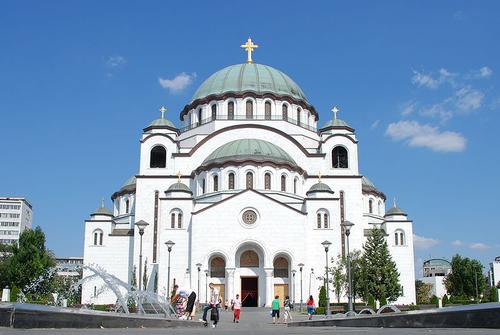 Saint Sava Cathedral BelgradePhoto: George Groutas (CC BY 2.0) no changes made
Saint Sava Cathedral BelgradePhoto: George Groutas (CC BY 2.0) no changes made
The Cathedral of Saint Sava (Hram Svetog Save) is the largest Serbian Orthodox church in the Balkans and one of the largest Orthodox churches in the world.
The church is located on the eastern part of the Svetosavski Trg square on the site where it is believed that in 1595 the relics of Saint Sava, the founder of the Serbian Orthodox Church were burned. The monumental cathedral is clearly visible on the contemporary skyline of Belgrade, and one of its main attractions. The church was built in the Serbian-Byzantine style, with four 44-meter high towers. At its highest point, the dome is 70 meters high, while the important gilded cross is an additional 12 meters high, giving the cathedral a total height of 82 metres. The church can accommodate 10,000 worshipers.
Under the floor of the church there are vaults with the crypt of Saint Sava and the burial place of the Holy Prince Lazar. The cathedral is clad in white marble and granite, the murals are yet to be done. The plan is to decorate the main dome with an immense mosaic of Christ Pantocrator.
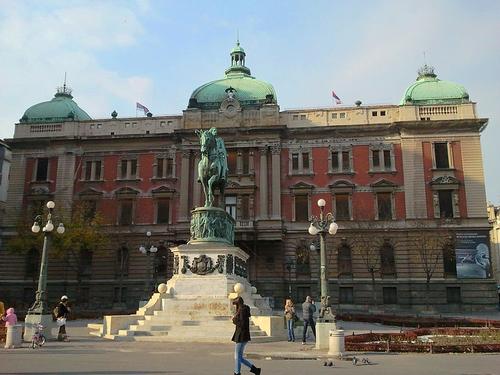 National Museum BelgradePhoto: Petar Miloševic CC 3.0 Unported no changes made
National Museum BelgradePhoto: Petar Miloševic CC 3.0 Unported no changes made
The National Museum in Belgrade (Narodni Muzej) is the largest museum in the country and has one of the most extensive art collections in the Balkans. The collection consists of archaeological finds, medieval artefacts and paintings from European art history. You will find works by Matisse, Monet, Renoir, Rubens and Van Gogh, among others.
Tips
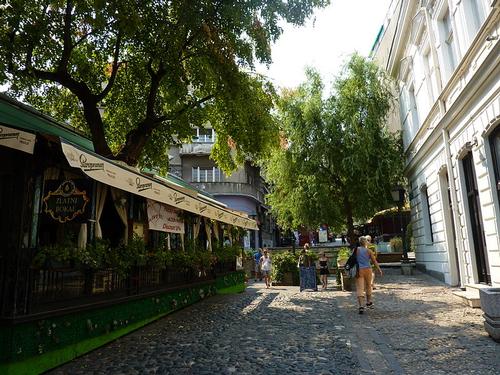 Skadarska Street BelgradePhoto: Erwan Martin CC 2.0 Generic no changes made
Skadarska Street BelgradePhoto: Erwan Martin CC 2.0 Generic no changes made
The typical atmosphere of Belgrade can be felt in Skadarska Street. You will find cozy restaurants, nice cafes and authentic Serbian bars. Often there are live bands playing in the street until late in the evening. There are also beautiful trompe-l'oeil paintings on walls in this street.
Useful links Belgrade
BBC Country ProfilesWorld Fact Book Explore all Countries
How to call
Last updated June 2025
Copyright: Team - The World of Info